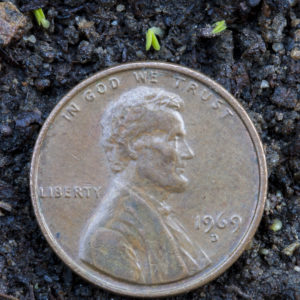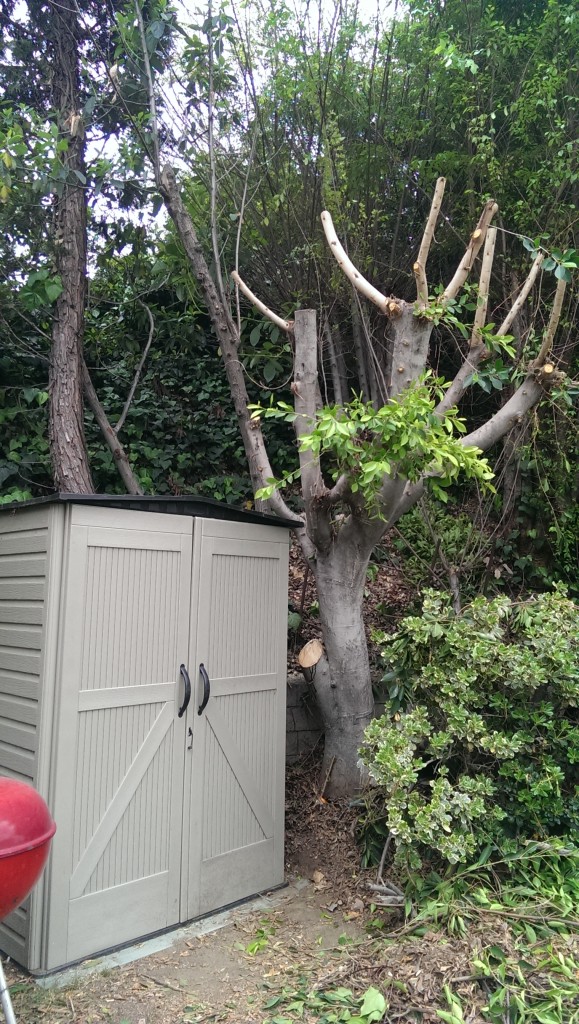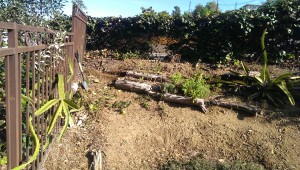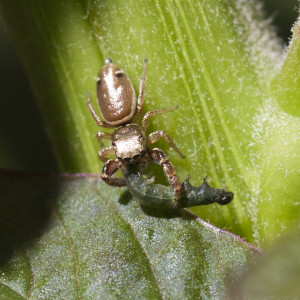Growing out Botanical Interests’ Holy Basil
One of my favorite Thai dishes is ka prao gai (holy basil chicken.) I typically make this minced chicken with Thai basil. However, the authentic version is made with ‘Thai Holy Basil.’ Naturally, I prefer to grow my own. As it turned out, tracking down the exact seeds and germinating ka prao (Thai holy basil) ended up being an unexpected quest. In this quest, I learned that “Holy Basil” is as known as “Tulsi” in India. Holy basil or tulsi or sacred basil are general terms for four types of basil: Kapoor, Krishna, Rama, and Vana. The next part of the quest was to figure out which of those for is ka prao. The internet had limited information and I was not very good at decoding what is there. I then turned to the brut force method– grow them all out. Based on pictures, the one I sought has asymmetric leaves.

I started on this quest last year and I finally found and successfully germinated the holy basil used in ka prao gai. The plants are still growing and I plan to do a post about it. Please stay tuned.
In the meantime, this post is about how it is neat to find that one of my favorite seed companies is now offering (as of the 2016 growing year) Holy Basil. Continue Reading
Building my first raised planter

Located close to the house and features of the house (like the brick succulent planter that it is adjacent to) aesthetics was one of the primary concerns when planning out this new ground to work and plant on. Raised planters with their long and symmetric lines are more aesthetically pleasing than say a row of nursery containers. Needing more growing area, it was time to finally install a more formal looking planter. Continue Reading
Pruning and Digging Day

Today was a productive day. I got done what I have always wanted to do– lop off a part of the weeping fig (ficus benjamina) tree that was preventing the garden tool shed from sitting flush with the wall behind it. I also gave the weeping fig its second pruning since being acquainted with it. One of the reasons for the dramatic hair cut is to bring more light into the garden. Light that I need for sun loving crops. The second reason is to thin it out as the brown scale (insects) are beginning to amass. Continue Reading
February 2016 Fruit Tree Round Up
February 2016 fruit tree round up is in video format this year.
“Resort Garden” tour on YouTube
Often ti mes being a “Stay at home, Dad” means making sacrifices because there are simply not enough hours in the day to get everything done. Actually, a more accurate statement is, ‘ there are simply not enough hours in the day to get everything done without your neighbors thinking that you are crazy.’ If it was not weird, I would probably plug in my work light and garden into the night. Since it is, the alternative is to skip on a breakfast outing and instead stay behind and work in the garden.
mes being a “Stay at home, Dad” means making sacrifices because there are simply not enough hours in the day to get everything done. Actually, a more accurate statement is, ‘ there are simply not enough hours in the day to get everything done without your neighbors thinking that you are crazy.’ If it was not weird, I would probably plug in my work light and garden into the night. Since it is, the alternative is to skip on a breakfast outing and instead stay behind and work in the garden.
With no interruptions, I was able to create a few more planting plots by terracing the Resort Garden. I am very excited about the seeds that were sowed as a result: sun flowers, collards, brussel sprouts, marigolds, Thai basil.
Be sure to check out the video tour of this space!
A Thing Or Two About Fruit Trees
 For anyone interested in growing fruit tree(s) and anyone interested in how their fruit is grown.
For anyone interested in growing fruit tree(s) and anyone interested in how their fruit is grown.
With exception to tropical fruit, most of the commercially available fruit (citrus, apple, peach, avocado, etc) does not exist in the wild. The fruit we consume was created from selective breeding (hybridization) and accidental discovery. These fruit are mutant fruit; if you will.
“Hybridization occurs in one of three ways. People can manually cross citrus through assisted sexual reproduction, transferring pollen from one plant to another and seeding from resulting fruit. This kind of trial-and-error, wait-and-see experimentation requires great patience. Alternatively, people can hunt for desirable varieties that appear spontaneously on eccentric tree branches– mutations known as bud sports or chimeras. In the atomic age, plant breeders gained a third technique: bombarding seeds with radiation to induce mutations. (The popular Rio Red grapefruit came into being at Brookhaven National Laboratory on Long Island.) Once a desirable varietal has been created or discovered, it must be asexually copied to be perpetuated. Citrus hybrids are unstable: sweet orange seed may sprout into a sour lemon. Only grafting produces uniform, predictable results.”
Farmer, Jared. Trees in Paradise: A California History. New York: W. W. Norton, 2013. 227-228. Print.
Continue Reading
Asiatic Lily planting
Asiatic lily (lilium). There is great enjoyment from growing one of my wife’s favorite flowers for her. With 30 bulbs to plant, it is going to be a challenge to find a place for them. Time is also another factor. Usually, lunch is made during my kid’s nap. Today, I postponed lunch and got to work as quickly as I can. On a good day, I may have a three hour window.

Spider Sensed

When it comes to beneficial insects in the garden, spiders receive little acknowledgement for their contributions. Perhaps it is because some leave nasty bites and thus scare us. Or perhaps it is because they perform the work of protecting our plants and crops quietly. In the shadows of the ever popular ladybug, our spider friends work tirelessly and without recognition. The real reason may be technical– spiders are not insects but rather arachnids. Humor aside, perhaps it is time to shine the spotlight on our eight-legged friendamies.
